 |
 |
ARCADE 2006 Flight
Here are some pictures from the 2006 flight campaign.
2006 Campaign
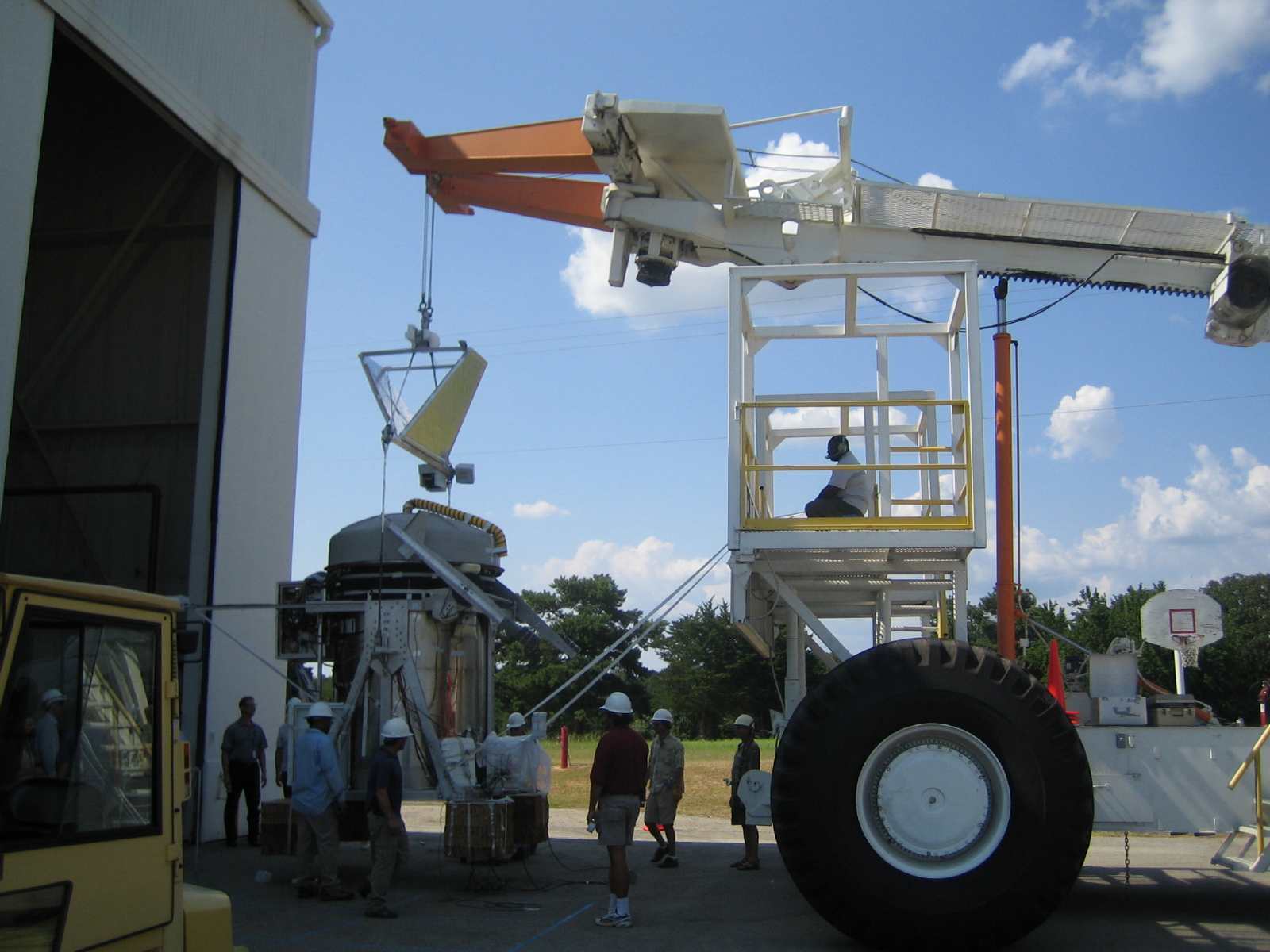
|
The "Tiny Tim" launch vehicle picks up the ARCADE 2006
payload and rolls out of the high bay in Palestine, TX.
A protective lid covers the dewar, which contains 1800 liters
of liquid helium at a temperature of -452 F. The V-shaped reflective
shield visible above the dewar will block emission from the balloon and
flight train during observations.
|
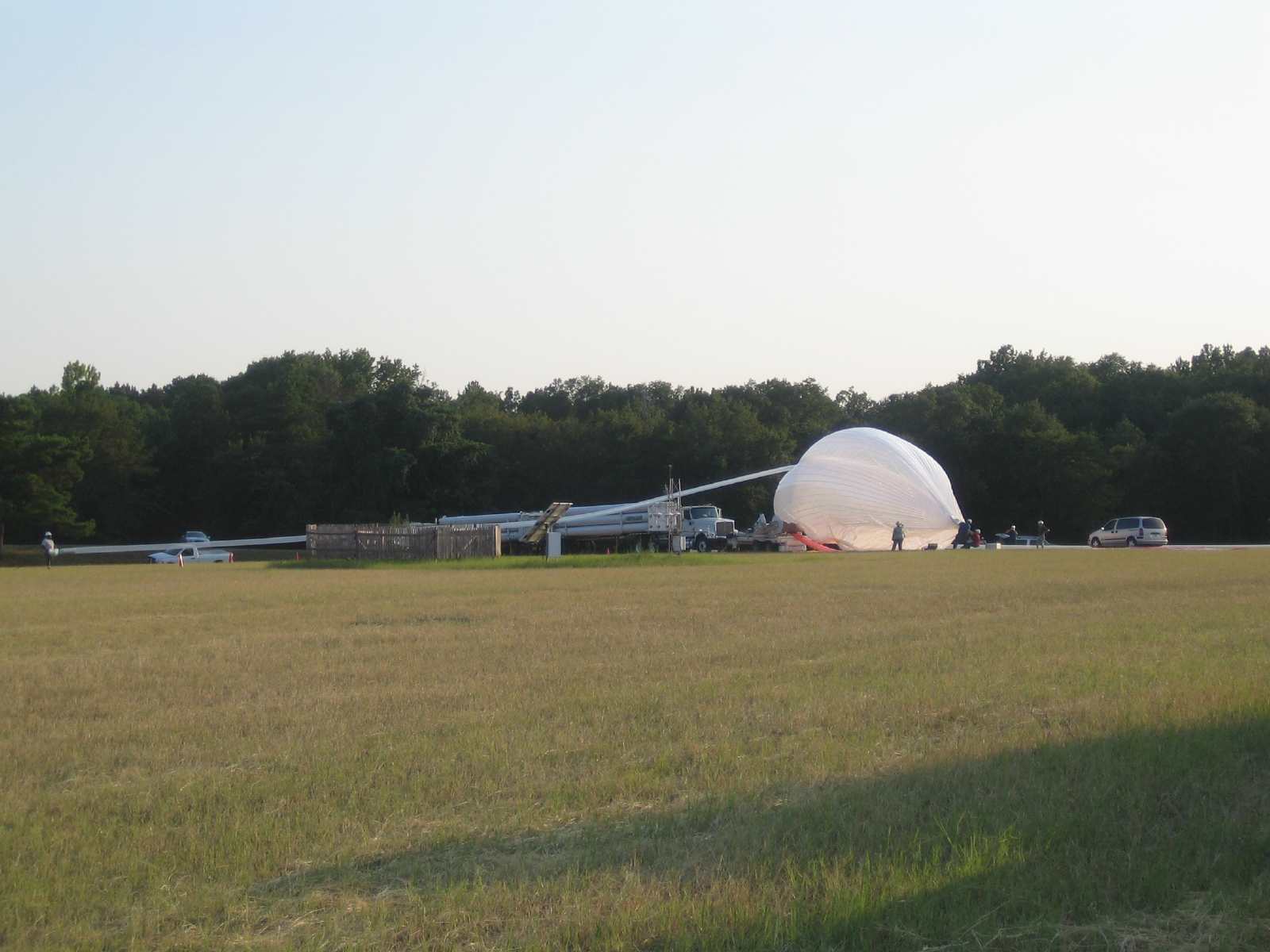
|
Inflating the balloon prior to the 2006 launch.
The 2006 payload flew on a 29 million cubic foot
helium balloon.
|
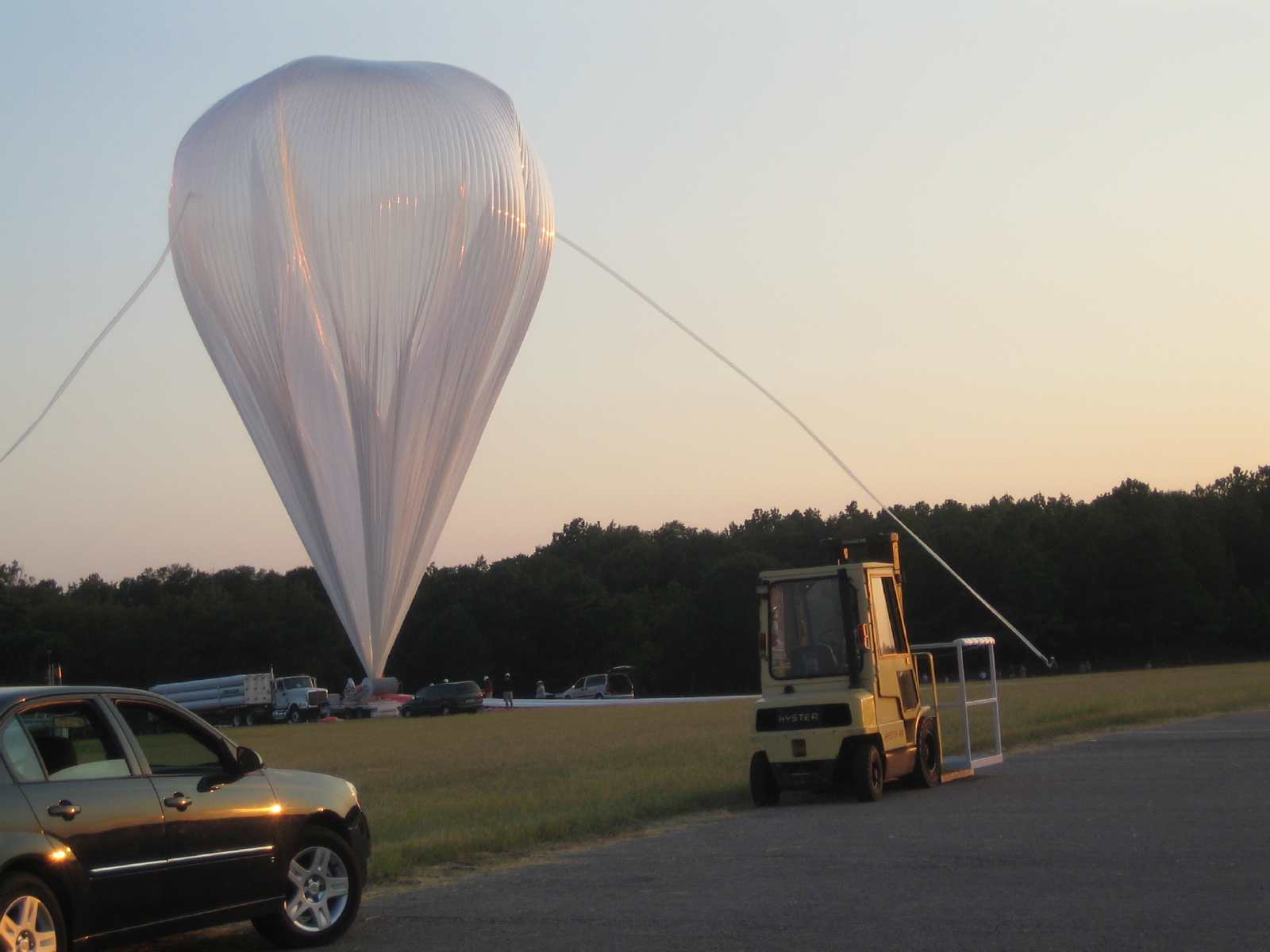
|
Midway through balloon inflation, the balloon moves
to the upright position. The two fill lines are visible
on either side.
|
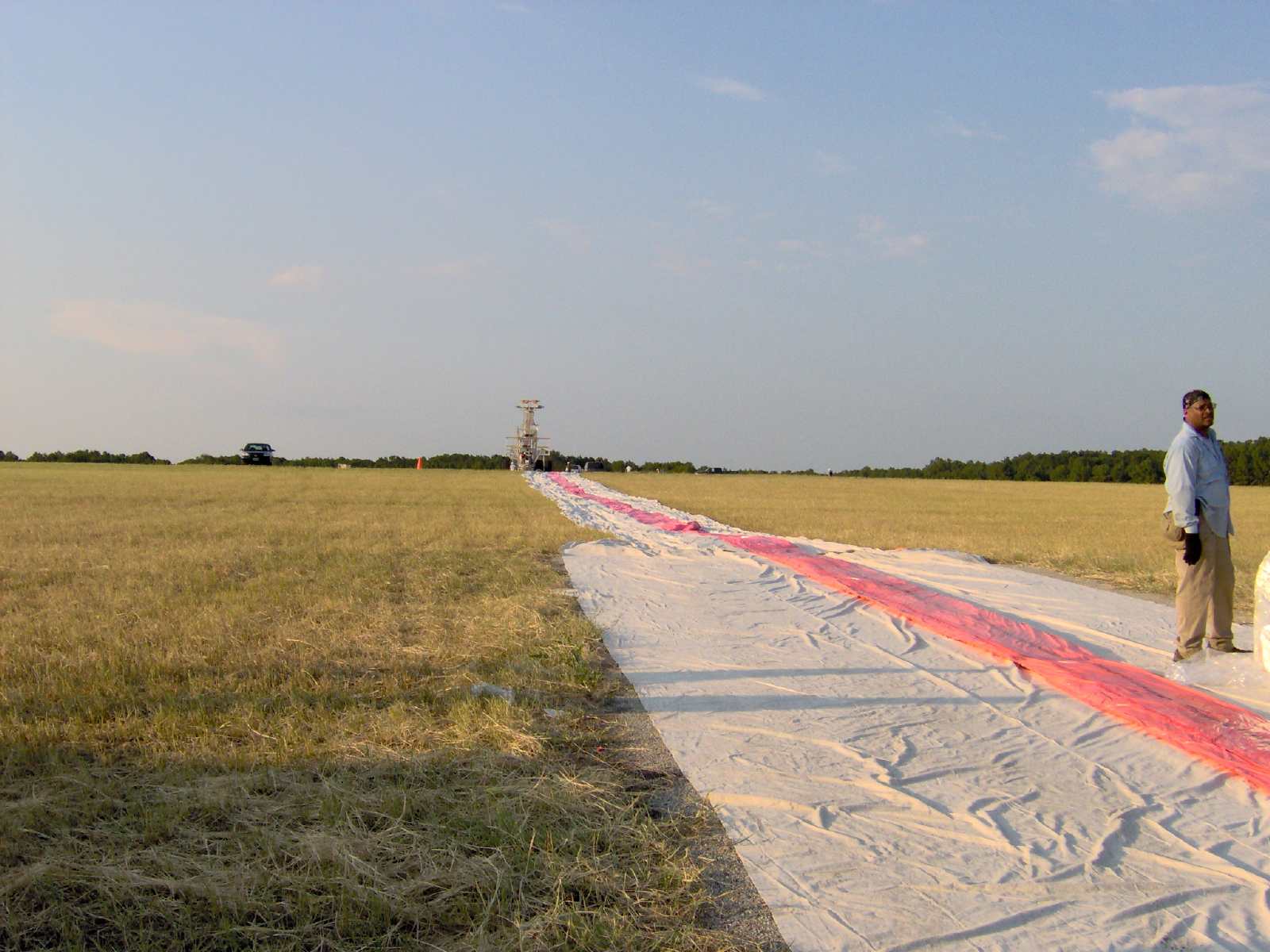
|
Balloon layout prior to the 2006 launch.
The thin plastic film of the balloon main body
is inside the protective pink pastic cover.
Tiny Tim and the payload are barely visible in the distance.
|
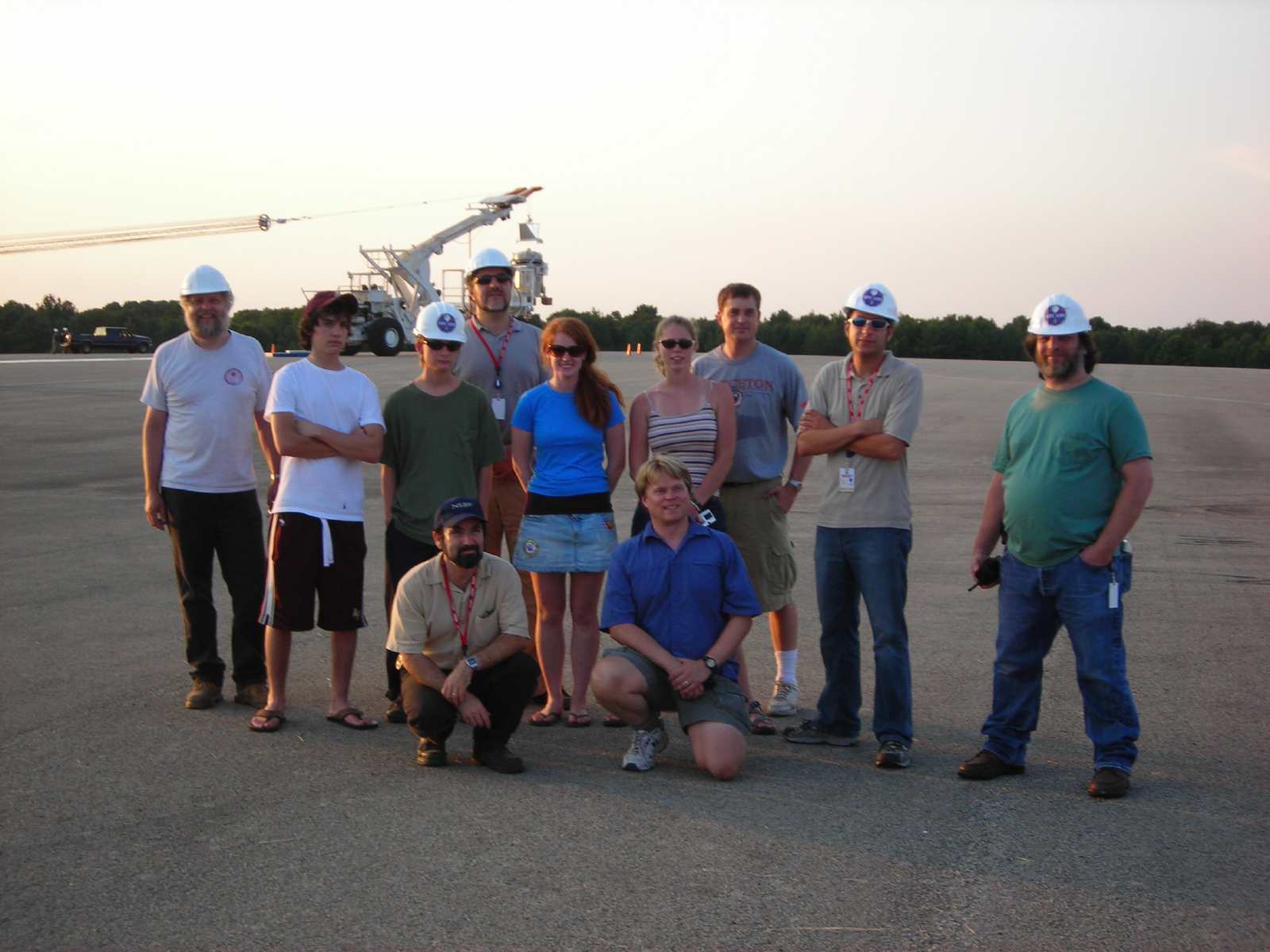
|
Some of the ARCADE team pose on the flight line prior to launch.
Left to right:
Dale Fixsen, Dan Oegerle, Luke Lowe, Phil Lubin,
Michele Limon (back),
Jane Cornett,
Mike Seiffert (kneeling),
Sarah Fixsen,
Ed Wollack,
Jack Singal,
and Paul Mirel.
|
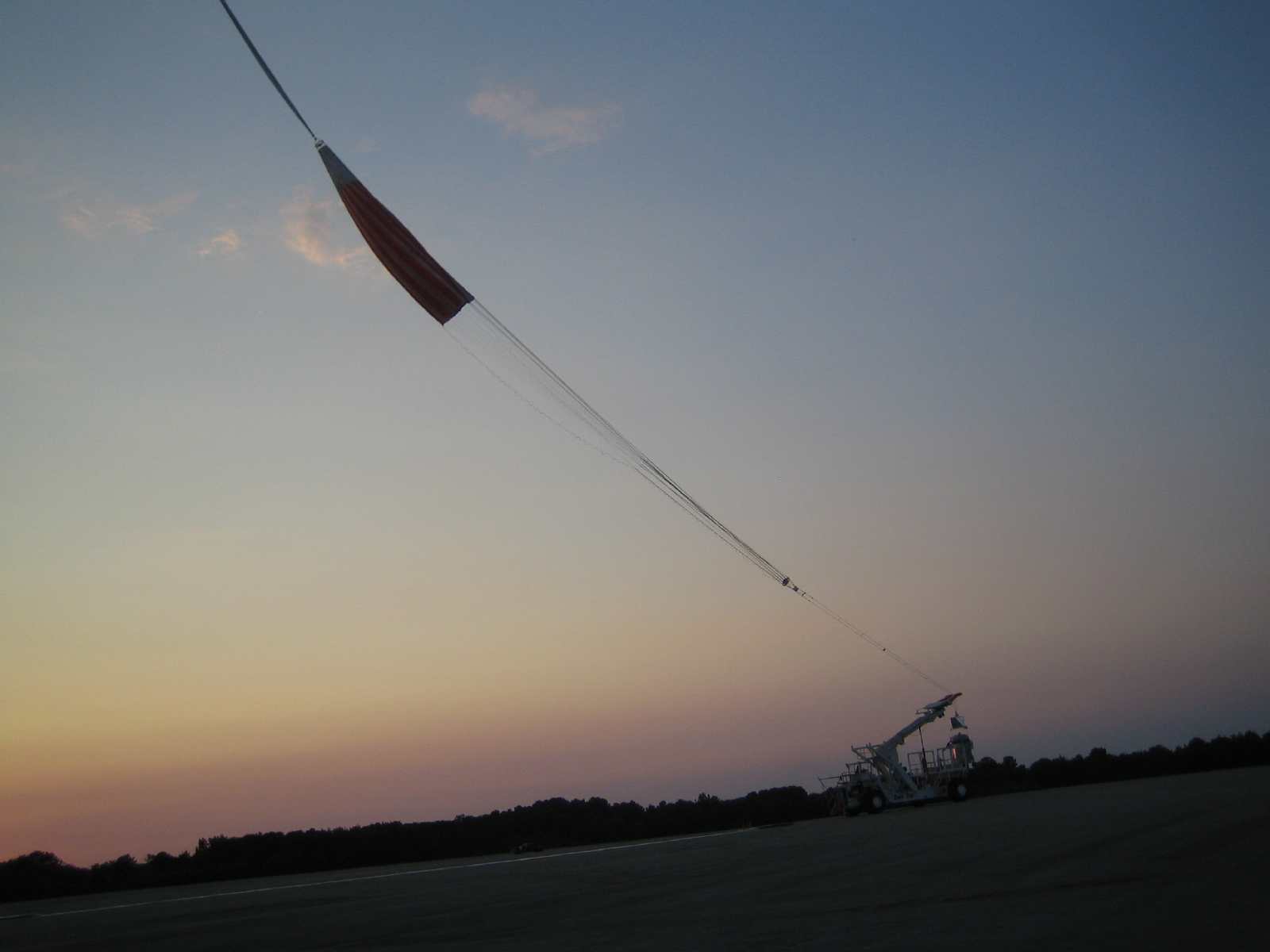
|
Tiny Tim and the ARCADE payload at launch.
The parachute connecting the payload to the balloon
is clearly visible.
|
In-Flight Video
The 2006 payload included a video camera.
ARCADE uses a
novel design
with cryogenic antennas
operating only a few degrees above absolute zero
in an exposed environment
with no protective windows between the cold antennas
and the atmosphere holding the balloon up.
Boiloff helium gas from the main tank
flows past the antennas
to prevent the air from freezing onto the antennas.
Video footage
taken during the 2006 flight
demonstrates that the design works:
ARCADE took data for 4 hours
with no visible condensation on the antennas.

The image above shows a drawing of the ARCADE payload.
The instrument is mounted inside a large
(5 feet in diameter, 8 feet tall)
bucket dewar,
much like a giant Thermos bottle.
The antennas attach to the top of the dewar
and are tilted to point 30 degrees from vertical.
A carousel covers the top
and can rotate to allow each antenna in turn
to view the sky through a sky port.
A video camera attached to the reflective shield
can view the antennas from its vantage point
above and to the side of the dewar mouth.

The image above was taken on the ground prior to flight
It shows the dewar mouth
from the approximate vantage point of the video camera.
The sky point is oriented
to allow one cluster of antennas to view the sky.

The images above were taken during flight,
approximately two hours apart.
Each shows the dewar mouth
with the sky port open to the largest (3 GHz) antenna.
The corrugations inside the antenna
are clearly visible in both images,
and show no evidence for solid nitrogen "snow"
collecting inside the antenna.
The ARCADE design works!
|
|


